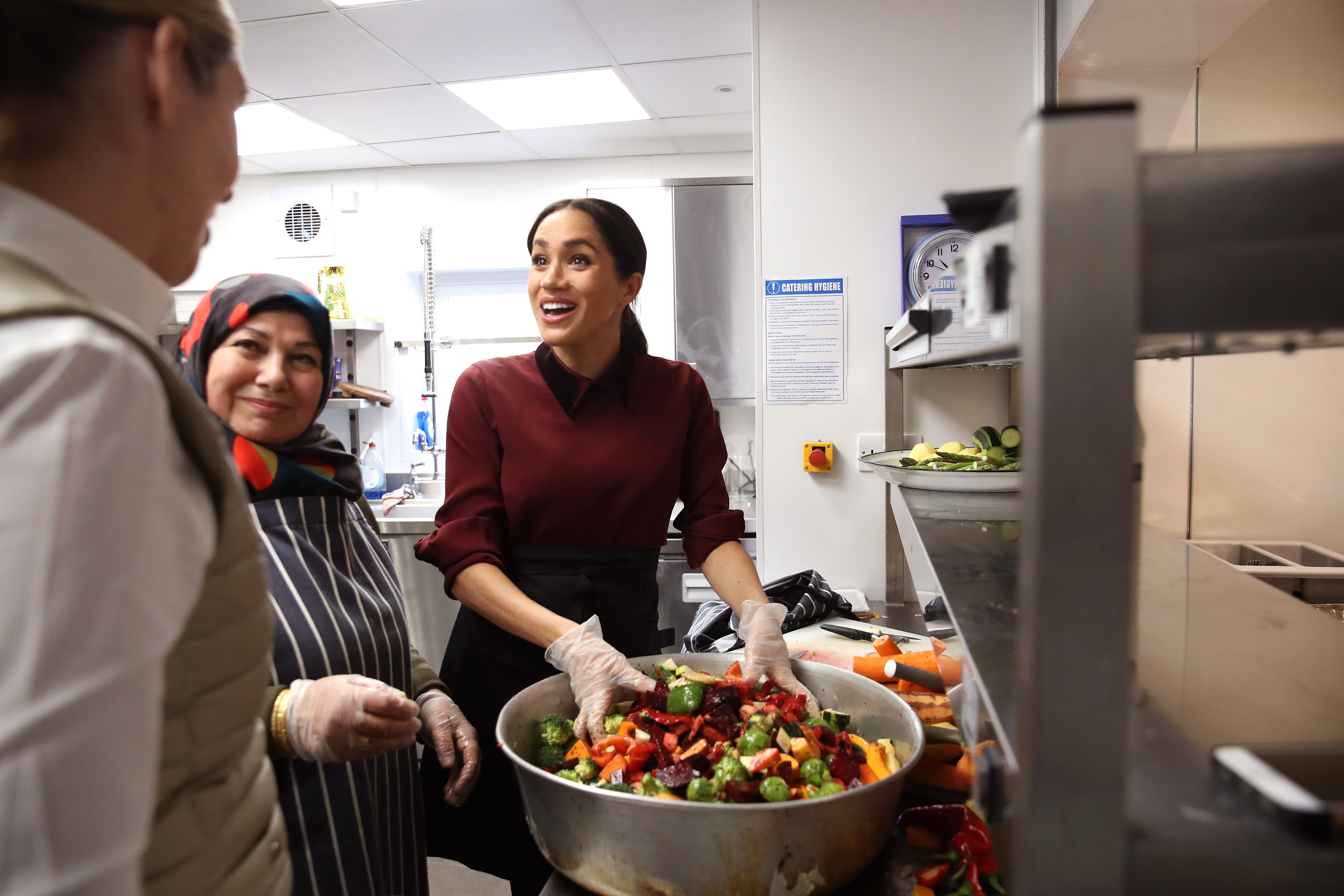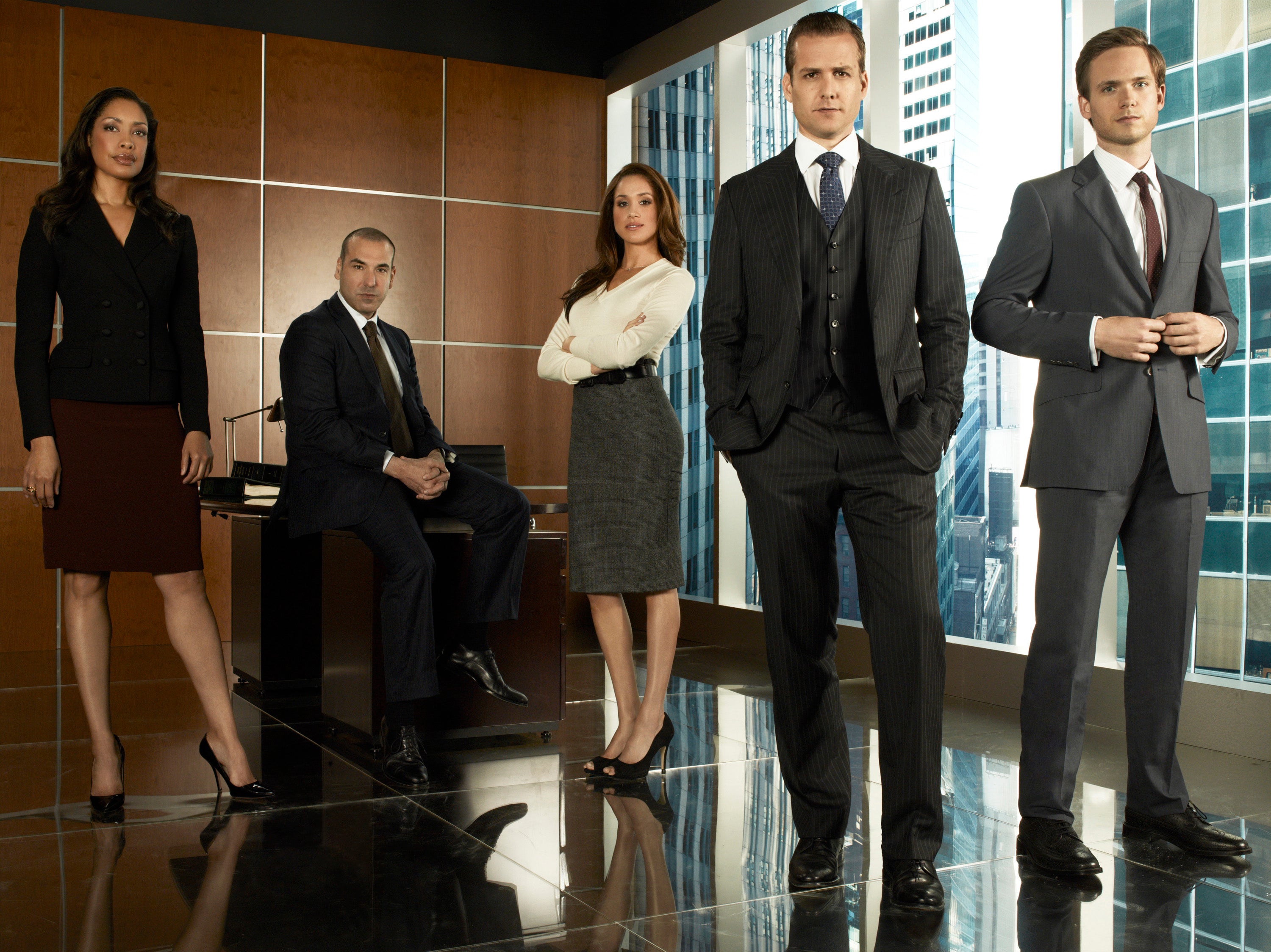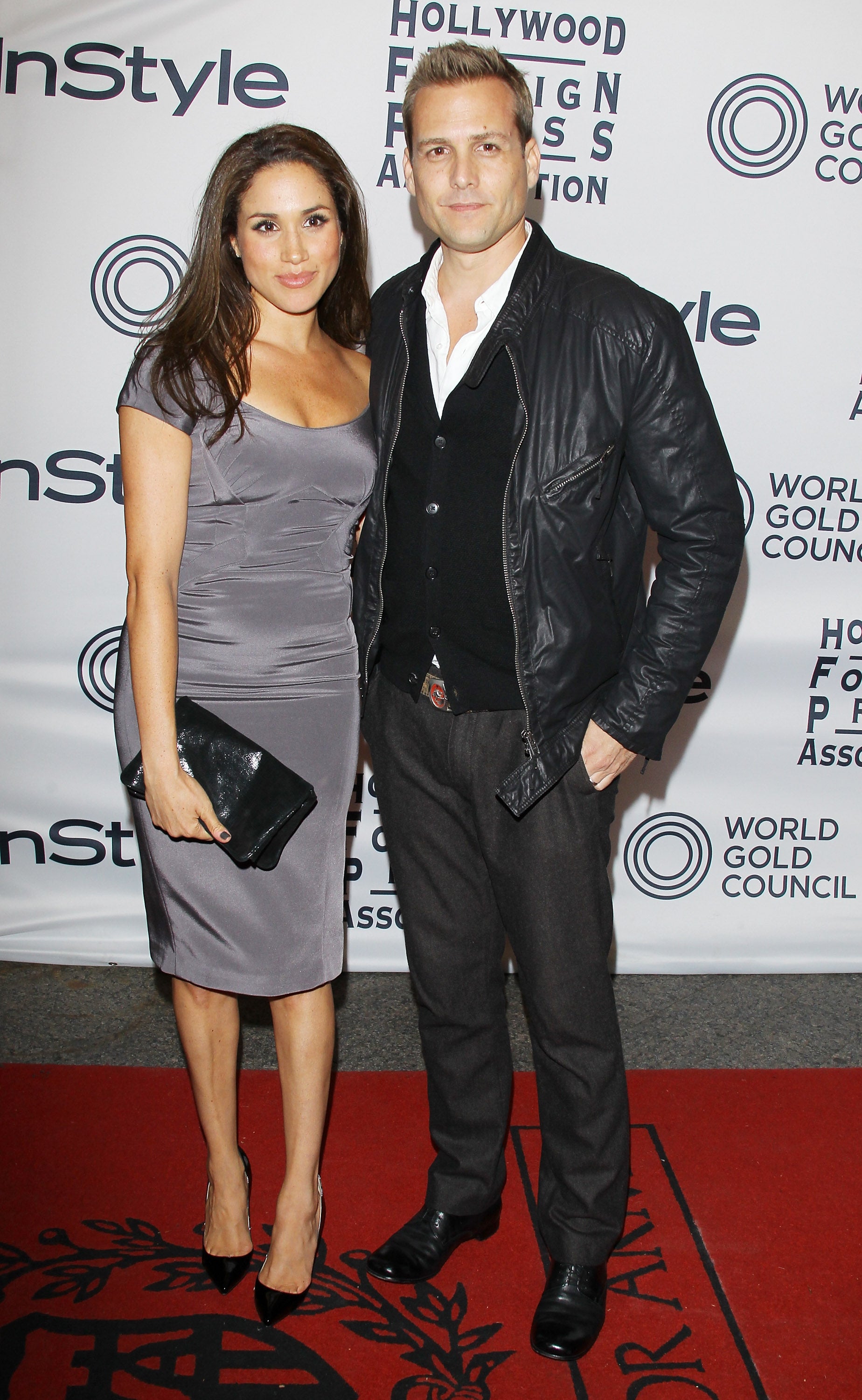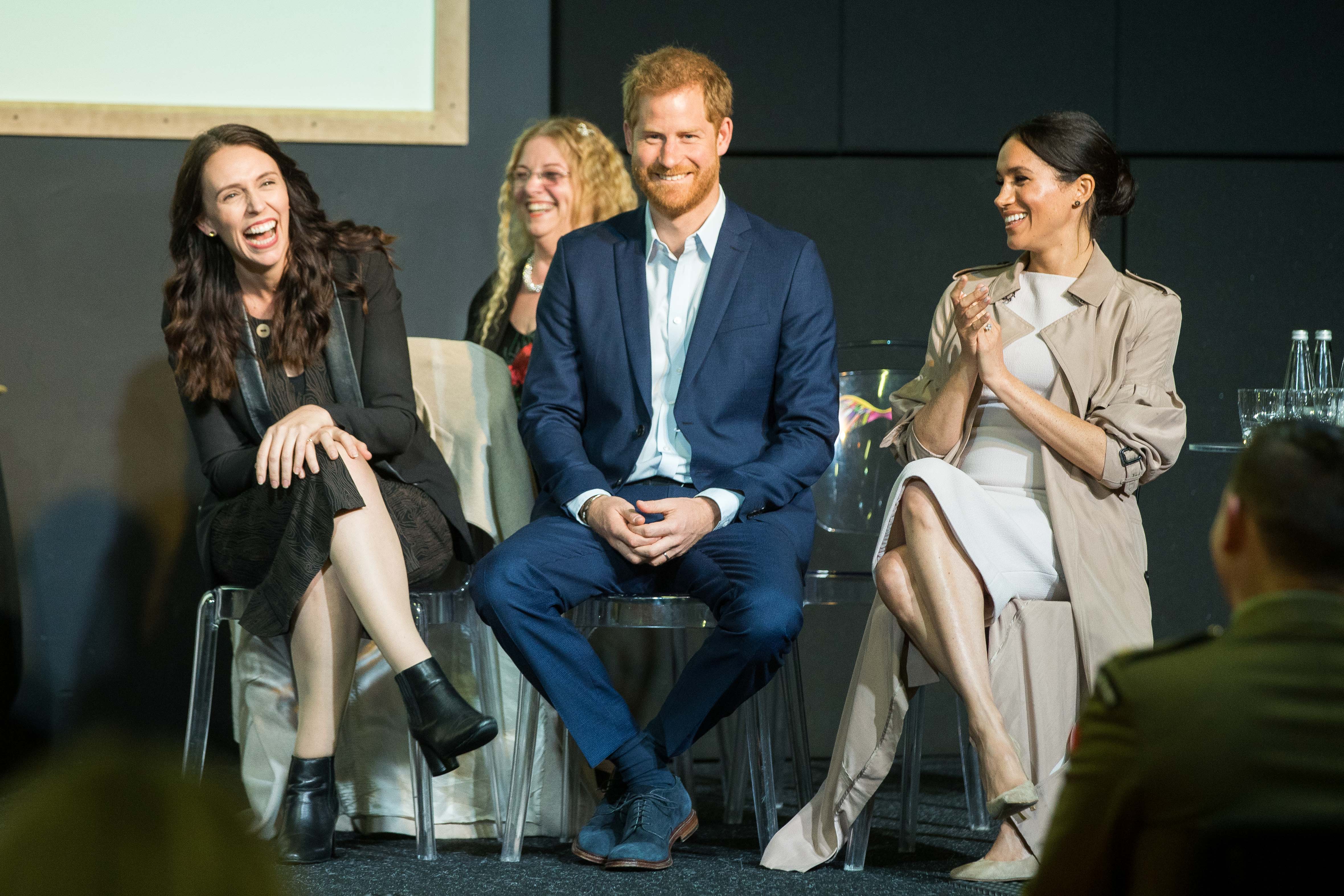From Hollywood fantasy to third-world reality, Meghan finds her voice
Even as a struggling actress, the Duchess of Sussex would draw attention to the things that mattered to her. In part two of his series, Sean Smith finds a celebrity who prefers the African bush to the Baftas


On the dusty road back to the Rwandan capital of Kigali, Meghan faced a dilemma. She had seen for herself the hardship in the Gihembe Refugee Camp and now, tired and hot in the back of a van, she read an email from her management company saying she had received an invitation to the 2015 Baftas. Normally, she would have punched the air, but not this time.
She had always wanted to attend one of the great nights of cinema but here she was completing a mission to the small east African country. For seven days she had seen for herself the effect female empowerment might have on a struggling nation. She had meetings and long discussions with the leading female members of parliament. Rwanda was the first country in the world where women held a majority in government.
She travelled the 50 miles to Gihembre to meet local leaders battling to improve living conditions for many thousands of Congolese refugees who had fled the dreadful conflicts and genocide that had blighted the region in previous years. It was a sobering experience and a million miles away from the champagne and congratulations of an awards night.
Meghan looked out of the window as they bumped along, gazing at the rolling fields and the farmers diligently tending to their goats. She realised she had to turn down the polished glamour of the Baftas. She would later write in Elle, “No, my heart said. And it wasn’t a soft whisper; it was a lion’s roar.”
Meghan understood that her life was a delicate balance between feminine and feminism. She did not see them as mutually exclusive and understood that her website would receive more clicks if she recommended a lip gloss than when she wrote about the more serious things that mattered to her. She called it a swinging pendulum that moved from Hollywood fantasy to third-world reality.
Later she would find a kindred spirit in the New Zealand prime minster Jacinda Ardern, who would feature on Meghan’s famous Vogue cover, as well as sitting beside her at a celebration of women’s suffrage in her country in 2018. Ardern’s pitch-perfect observation echoed Meghan’s feelings: “You can wear a bra, makeup, have never read Germaine Greer and still be a feminist.”
Meghan had wasted no time in finding her voice when she first achieved a little fame in the hit television series Suits. She had spent her twenties auditioning for roles where she wore next to nothing and said even less. She was invariably cast as a variation on the role of “hot girl”. She didn’t even have a name on the mindless game show Deal or No Deal. It pretty much represented everything she disliked about Hollywood and the entertainment industry. How could she talk about the empowerment of women while wearing a dress that was far too tight and tottering about on a pair of killer heels that made her feet ache?
That changed when she was cast as the paralegal Rachel Zane in Suits. The director of the pilot, Kevin Bray, recalled that there was some discussion about Meghan’s ethnicity after her audition – was she Latino or perhaps Mediterranean? He told the others that he could tell she was biracial, like himself.

Meghan found an ally and friend in the production head, Bonnie Hamer, who thought the actor was relatable and authentic. She was committed to colour-blind casting. With her encouragement, Meghan hosted for the first time during the first season of Suits. She co-presented at the Anti-Defamation League Entertainment Industry Awards at the Beverly Hilton Hotel in Los Angeles.
During the second season, she put on a crisp white T-shirt emblazoned with the slogan, “I Won’t Stand for Racism" and spoke to camera about her experiences in an initiative organised by the Erase the Hate campaign, a not-for-profit charity founded in 1994 to “fight hate and discrimination” in America.
Speaking with sincerity and purpose, Meghan introduced herself as a biracial woman who wanted to be part of something important because it “hits a really personal note”. She recalled the offensive jokes and names, her mum being called the N-word, her grandparents’ journey across America where they had to go round the back of restaurants to get food for the family. She said: “I thought that was really isolated to those days that we had passed. Sadly they are not.”
The ignorance that is racism is given. Like gravity, it’s there, it exists. You should always be vigilant for it and be prepared for it
She spoke optimistically for the future. “I am really proud of my heritage on both sides. I am really proud of where I have come from and where I am going. But I hope that by the time I have children that people are even more open-minded to how things are changing and having a mixed world is what it is all about. Certainly it makes it a lot more beautiful and a lot more interesting.”
She was speaking in February 2012. It would be six years before she became a mother and two more before the killing of George Floyd roused the world from its complacent slumber.
She herself would face the sobering reality of racism when it was revealed that her character in Suits had a black father, so she was biracial, just as Meghan was in real life. Social media fans were stunned, not all of them in a positive way and for the first time Meghan had to contend with racist tweets. She responded simply: “The reaction was unexpected.”
The actor playing her father, Wendell Pierce, was less diplomatic. “The ignorance that is racism is given. Like gravity, it’s there, it exists. You should always be vigilant for it and be prepared for it.” Meghan would need to be watchful in future.

Meghan had moved to Toronto where Suits was filmed. Her brief first marriage to up and coming Hollywood producer and agent Trevor Engelson had foundered. It ended in divorce in 2013, less than two years after a fun-packed beach wedding in Jamaica. Although they had been together for seven years.
She began a new relationship with the celebrity chef Cory Vitiello and, although they were part of the social whirl in the Canadian city, they were not a couple that existed solely for the pleasure of the gossip columns or the local paparazzi. There are very few pictures taken of them on the town, at some gala or important social function. They were just as likely to be seen strolling hand in hand near her home, walking her rescue dog or just shopping for groceries in a local supermarket – a template perhaps for her preferred life with Prince Harry.

For instance, only one picture exists of her volunteering at the St Felix Project and even that is a low-key affair where, barely recognisable in a pulled-down baseball cap, she is one of a group of a dozen men and women doing their best for those less fortunate. She worked diligently in the kitchen of the charity’s centre in downtown Toronto, providing meals for the homeless and the hungry. According to those that worked alongside her, Meghan was “always very humble during volunteering, keeping a low profile and working hard”.
The volunteering was a throwback to her teenage years in Los Angeles. Then aged 13, she had been overwhelmed by what she witnessed helping out in the Hippie Kitchen in the area known as Skid Row in downtown LA. It had been too much for her at the time but she returned three years later to dish out plates of food and clear tables with fresh resolve.
She helped out many times and, crucially, remembered the names of the people she served. She began to properly understand the meaning of community spirit – something that would serve her well when she connected with the women of the Hubb Community Kitchen following the Grenfell Tower fire of 2017.
A low profile experience such as helping out at St Felix reveals the two sides of Meghan: the private woman, taking her dog for a walk before spending the morning doing her bit to help others; and the professional actress keen to network to raise her profile professionally and draw attention to the causes that matter to her.

A sign of her growing stature as a television star came when she was added to the panel for the annual conference in Dublin of One Young World, a forward-thinking London-based charity that aimed to reach out to young people to address global issues and talk about ways to accelerate social impact.
During her first panel, “Bridging the Gender Gap”, Meghan told her audience how she had become more empowered during her time on Suits – so much so that she had told the series creator, Aaron Korsh, that she was fed up that every episode seemed to begin with the words “Rachel enters wearing a towel”. She told him: “It’s just gratuitous.” He agreed and decreed no more towels. She also argued that young women in music videos needed to have a higher value of themselves. She had a point – even the quickest of flips through MTV shows they are lucky to get the towel at all.
She was so eloquent, so erudite. It wasn’t your average actress stepping up and talking about gender equality. It was the real deal – very forthright, very confident and very uncelebrity
One of the most insightful points she made was the need for men to stand up and empower women. It had been part of one of the discussions at the UN when she had visited the offices in New York. One initiative mentioned there was a group of CEOs in Australia who refused to speak at any conference unless four female CEOs were also invited because “their voice is just as valuable”. She told her audience: “You need men to try and effect that change because at the end of the day what scares people is this idea that female empowerment is somehow threatening. No, it’s not. You empower the women, you empower the community.”
Event organiser Kate Anderson was impressed. “She was so eloquent, so erudite. It wasn’t your average actress stepping up and talking about gender equality. It was the real deal – very forthright, very confident and very uncelebrity.”
Meghan’s connection with the United Nations grew stronger in March 2015 when she gave a speech at a UN Women conference in New York. It was a defining moment for her. She began, “I am proud to be a woman and a feminist” and received a round of applause. She told the guests about writing to Hillary Clinton at the age of 11, she spoke of her trip Rwanda and she sweetly praised her father, Thomas Markle, for championing her 11-year-old self and standing up for what’s right.

She spoke persuasively of the need for more female parliamentarians globally, ending her address with a now famous rallying call: “Women need a seat at the table, they need an invitation to be seated there, and, in some cases, when this is not available, then you know what, they need to create their own table.”
In a rousing finale she channelled her inner Eleanor Roosevelt, saying that it wasn’t enough to simply talk about something you believed in. She implored everyone to “work at equality”. The UN secretary general Ban Ki-moon immediately got out of his chair to lead a standing ovation for the 33-year-old millionaire-actor from California. It would be more than a year before she met Prince Harry.
Meghan was appointed as a global ambassador for the charity World Vision Canada that same month. She returned to Rwanda to advocate and publicise the organisation’s Clean Water Campaign, observing that access to clean water in a community kept young girls in school “because they aren’t walking hours each day to source water for their families”.
Her impact, combined with contributions from others, raised funds that allowed the charity to support nearly 60,000 people with clean water. Her experience on the trip brought home to Meghan what was truly important in the world; a chance, she said, to redefine her barometer of what was valuable.
She gave children at a primary school a lesson in painting with watercolours, encouraging them to paint pictures of what they wanted to be when they grew up. Their paintings were collected and taken back to Toronto where they formed the basis for the Watercolour Project, which raised $15,000 for a new water source in Rwanda.
The publicity for the project described Meghan as an “actor and an activist”. It had been a long journey from the days of mind-numbing Hollywood auditions to speaking about female empowerment at a UN conference and making a difference to the lives of children in Rwanda. She had found her voice entirely by herself and not by clinging to the coattails of others.

As yet, she had not met Prince Harry and had no connection whatsoever to the Royal Family.
This is an extract from ‘Meghan Misunderstood’, which is published on 12 November. Preorder here
Tomorrow: Her week in hell, losing and regaining her voice and how the United Kingdom lost Meghan Markle. Don’t miss the final part of Sean Smith’s riveting account of the making of Meghan




Join our commenting forum
Join thought-provoking conversations, follow other Independent readers and see their replies
Comments